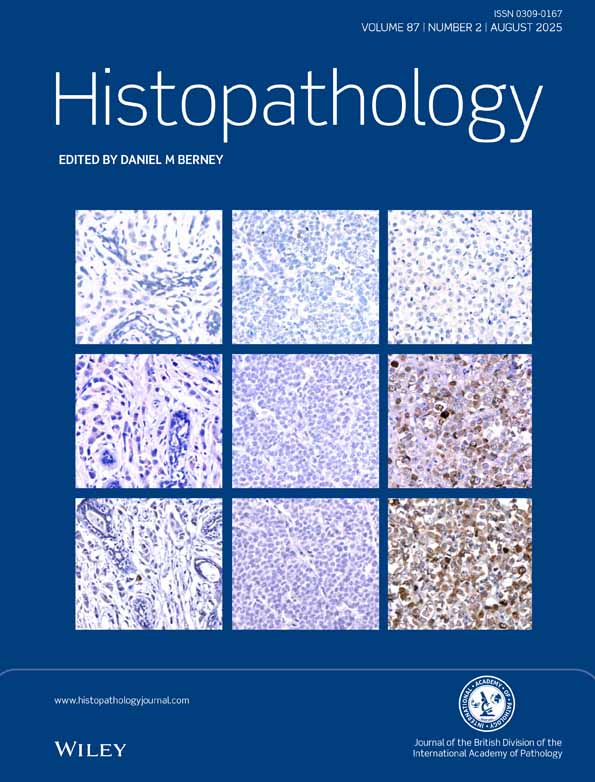Familial multiple gastrointestinal stromal tumours with associated abnormalities of the myenteric plexus layer and skeinoid fibres
Abstract
Familial multiple gastrointestinal stromal tumours with associated abnormalities of the myenteric plexus layer and skeinoid fibres
Aims: Multiple familial gastrointestinal stromal tumours are rare. We report the third family with two cases of multiple gastrointestinal stromal tumours showing skeinoid fibres. Associated abnormalities of the myenteric plexus layer are described and new hypotheses for the histogenesis of gastrointestinal stromal tumours are formulated.
Methods and results: Multiple gastrointestinal stromal tumours developed in the duodenum and proximal jejunum were removed from mother and son. No history of a specific syndrome or of mastocytosis was known. Light microscopy revealed typical gastrointestinal stromal tumours with skeinoid fibres. An unusual abnormality of the myenteric plexus layer, showing a diffuse spindle cell hyperplasia, was noted in the macroscopically normal digestive wall. No abnormalities of the ganglion cells were associated. Tumours and the spindle cell hyperplasia showed similar morphological and immunohistochemical features with expression of CD34 and CD117 antigens. Follow-up revealed recurrences in the mother.
Conclusion: The morphological characteristics of these two cases of familial gastrointestinal stromal tumours and of the associated abnormalities of the myenteric plexus layer, help to better explain the histogenesis of multiple familial gastrointestinal stromal tumours. The hyperplasia of the myenteric plexus could be considered a risk factor for recurrent tumours.




